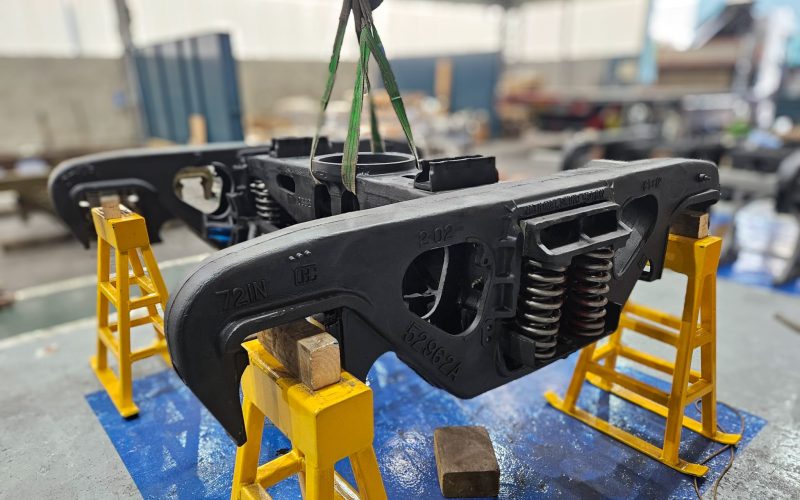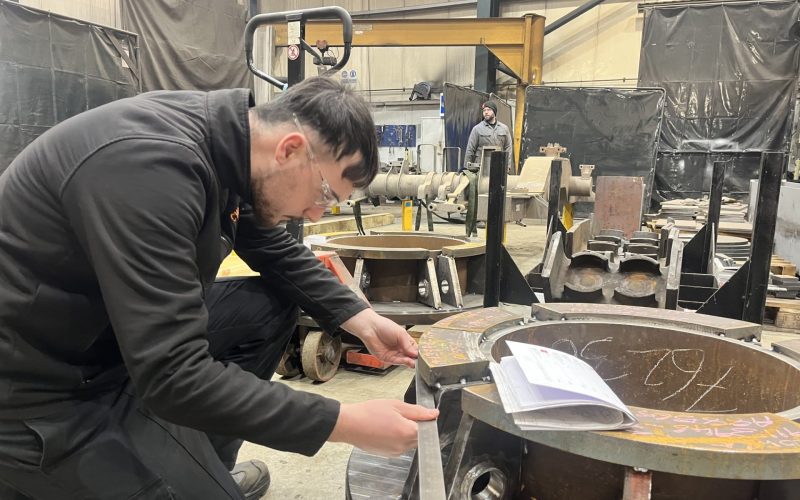First BAA wagon is released back into service
12th March, 2025
The first refurbished BAA wagon has been released back into service, in a significant development for the railway industry. DB Cargo will be
2nd December, 2021
With their sights set on keeping rolling-stock on the rails, most rail operators recognise the benefits of taking a proactive approach to maintenance. Tackling maintenance work before parts failures take units off the track can help to reduce downtime and avoid unexpected hits to the bottom line. It’s a common sense approach to fleet management and just one of the ways in which the rail industry can reduce strain on resources and improve overall performance levels. Here, we take a look at how maintenance scheduling can make life easier for rail operators, and how to decide on the best approach to part replacement or repair.
Historically, rail operators have undertaken periodic reviews and general repairs on their fleet every seven years, regardless of miles covered or conditions endured. This has inevitably led to cost inefficiencies, unnecessary downtime and materials wastage, especially where components have seen relatively little wear and tear during the arbitrary seven year period. Today, organisations are under increasing pressure to alleviate budget and resource strain and create more sustainable operating models, leading to many more adopting predictive maintenance techniques. It’s easy to see why a more proactive approach to maintenance is growing in popularity: it provides rail operators with the ability to lower the costs of maintenance by up to 15%, as well as delivering ongoing economic efficiencies1: This is achieved firstly by reducing wastage and the time taken to repair; as maintenance teams know exactly which parts they need to service and when, and secondly by reducing the amount of time rolling-stock spends in the depot; meaning train operators can provide more capacity using fewer trains.
Whichever method a rail operator uses to plan maintenance schedules, once a fault is identified they will have a choice to make: should they replace parts with brand new equivalents or opt for refurbishment? It’s a decision that won’t always come down to price alone. In fact, there are four key things worth considering before opting to replace or refurbish:
Once the above analysis is complete, it should be easy to decide whether refurbishment of a component or assembly is possible and practical. If the answer is yes, refurbishment makes sense for one other important reason: environmental impact.
As our nation and others across the globe race towards net zero, every industry has a responsibility to limit its impact on the planet. Rail is naturally a low-carbon transport mode, comprising less than 2.5% of total transport emissions and only about 0.6% of the UK’s total emissions2, but there is still more for the rail industry to do. Making the significant cuts needed to support the UK’s goal to become net zero by 2050 will be challenging and will require investment in research and development of new train technologies, such as hydrogen and battery power. In the short term however, rail operators can think about the carbon reduction measures already within their control.
Refurbishing rather than replacing removes the need for a newly manufactured part and the carbon emissions associated with that process. It also reduces the amount of waste that needs to be disposed of or recycled by prolonging the product life cycle. Combining the decision to refurbish with the choice of a maintenance partner that operates in an environmentally friendly way is an excellent way to cut carbon and give your green credentials a boost.
Every aspect of fleet maintenance becomes easier when you have an expert partner to lean on. Crucial things to look for in a maintenance and supply partner include industry experience, certified engineering expertise and an agile approach to getting you the parts you need without fuss or delay. An in-depth knowledge of core components, reverse engineering capabilities and fast turn-around times are also key.
At CWE, we help customers manage maintenance demands more efficiently through continual improvement of our own lean, low waste processes. We’ve recently invested in new buffer overhaul facilities and are working with our customers to develop predictive maintenance regimes for couplers, bars, bogies and buffers that are tailored to their needs and to specific product lines. Rather than sticking to arbitrary review periods, we assess usage and environmental conditions to give them an honest appraisal of their potential part failure rates and help them create realistic maintenance schedules. With sustainability always in mind, we’re also working with industry leading organisations to develop reclamation processes for key components that can override design faults, prolong product life cycles and reduce waste.
Every process we design and specialism we nurture is united by one common aim: to make life easier for our customers. It’s why we’ve made sure our welding meets EN 15085 standards and why we’ll bring our site support skills to you when you need us to, so that the need to transport heavy units is no longer a consideration.
If you would like to find out more about how CWE can support your organisation to cut cost, reduce downtime and prepare for our net zero future, please get in touch today.

12th March, 2025
The first refurbished BAA wagon has been released back into service, in a significant development for the railway industry. DB Cargo will be

28th February, 2025
In an inspiring display of determination and generosity, loyal servant to CWE Colin Jaques has walked over 200km during the month of February

18th February, 2025
At CWE, we’re proud to be part of the UK rail industry. We believe it’s a great place to work and that our